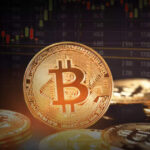Gold prices have surged to unprecedented heights, nearing the critical $4,000 mark, representing a remarkable increase of 45% since the beginning of the year when the metal was priced at $2,669 in January. This surge in value highlights gold’s status as a long-standing safe-haven asset, particularly during periods of economic instability. The most recent rise in prices has coincided with concerns about a potential U.S. government shutdown, a scenario that historically has led to increases in gold prices during previous shutdowns.
Historically regarded as the “currency of kings,” gold has always been highly valued for its unique properties—durability, malleability, and resistance to tarnish. In today’s market, it has shifted from a primary trading commodity to a favored asset for investors seeking stability. Unlike stocks and bonds, gold can be stored and exchanged physically, further enhancing its appeal.
Professor Andrea Bubula, a senior lecturer in economic analysis at Columbia University, notes that the recent trends in gold investment by central banks can be traced back to historical crises, including the 2009 Venezuelan banking crisis. The crisis prompted countries to diversify their foreign reserves beyond just U.S. dollars, emphasizing gold’s reliability in turbulent times. “Gold is good because it is typically negatively correlated with markets, so when markets do badly, gold does well,” Bubula explained.
The World Gold Council reports a significant rise in gold reserves held by central banks, which have nearly doubled over the past three years, increasing from a range of 400-500 tons to around 1,000 tons. Taylor Burnette, research lead for the Americas at the World Gold Council, identifies three primary categories driving gold demand: jewelry and technology, investor purchases, and central bank acquisitions. This year, investor demand has been the most significant component, as various stakeholders, including family offices and high-net-worth individuals, are looking to diversify their portfolios. On average, investors are allocating about 5% of their portfolios to gold.
The liquidity of gold is another factor contributing to its rising appeal. Its standardized weight and purity make gold easy to trade without the accompanying credit risk typically associated with other assets. Other external factors also play a role in the current gold rally. A declining U.S. dollar, which has dropped over 10% in value in the past nine months, enhances gold’s attractiveness. The inverse relationship between the U.S. dollar and gold prices indicates that as the dollar weakens, gold becomes more expensive, which can drive up demand.
According to the World Gold Council’s second-quarter report, total gold demand saw an increase, reaching 1,249 metric tons or over 40 million troy ounces, marking a 3% rise compared to the previous year. The growth was notably fueled by investments in gold ETFs, which accounted for a significant portion of the demand.
Bubula emphasizes the appeal of gold as a lower-risk alternative compared to equities and bonds, particularly in light of recent bearish sentiment among stock market investors. However, investing in gold is not without its challenges. The costs associated with storage and insurance can diminish the benefits, and unlike stocks and bonds, gold does not generate yield through interest or dividends.
In summary, as gold pushes toward record levels, its unique properties, historical significance, and current market factors converge to establish it as a critical asset for both investors and central banks amid ongoing economic uncertainty.






